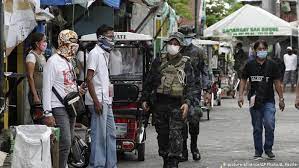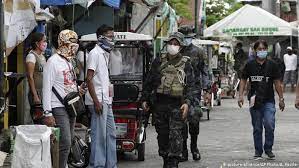
The Department of Health (DOH) on Tuesday night acknowledged an observed increase in Covid-19 cases but said there is “no definitive” evidence of a surge in Metro Manila.
Read related story: https://businessmirror.com.ph/2021/07/27/health-experts-want-hard-lockdown-amid-delta-covid-19-spike/(opens in a new tab)
This, after the OCTA Research Group had said there is already a “surge” in the National Capital Region (NCR).
The DOH said it values the work of independent experts but appealed to them to be “more careful” in making pronouncements in terms of the national situation, as this may cause more panic and fear.
“While we acknowledge the differences in the metrics and methods of analysis used by these independent groups, we share the same goal to keep the case numbers down and improve the healthcare system of the country, explained Health Undersecretary Maria Rosario Vergeire.
Although they are noting these observations, the DOH also stressed that “observations of independent expert groups but maintains that such observations should be carefully verified.”
However, the DOH, assured that they are closely monitoring daily trends and is immediately flagging areas with increases in rates of transmission based on two-week growth rates (TWGR), in affected population as per average daily attack rate (ADAR), and/or health care utilization.
Based on current data analysis by the DOH Epidemiology Bureau and FASSSTER disease surveillance tool, NCR is showing a 19 percent increase for its TWGR and ADAR of 6 cases per 100,000 population, which is at moderate risk.
The DOH said that Makati, Las Piñas, Pasay, Pasig, Taguig, Paranaque, Manila, Valenzuela, Navotas, Marikina, and Caloocan all have positive TWGR – a trend reversal from negative two-week growth rates 3-4 weeks ago. Additionally, Makati, Las Piñas, and Pasay have high risk ADAR.
“In terms of our health care capacity, nationally we are seeing low health care and intensive care utilization rate. We are also closely monitoring pending ER admissions. While we have enough capacity as of now as evidenced by the low risk HCUR and ICUR, we must continue our preparations to strengthen local health system capacities and further augment the needed resources to maintain these low risk levels. We need to make sure that we have enough capacity to cope with the demand in the event that cases continue their upward trend,” Vergeire said.
The DOH said that they are working hand in hand with the Metropolitan Manila Development Authority, Metro Manila Center for Health Development, Regional Epidemiology and Surveillance Unit, and City Epidemiology and Surveillance Units to ensure that these signals of increase in cases are immediately flagged, investigated, and addressed as soon as possible.
“We acknowledge that there is an increase of our case metrics which is why we urge people to continue adhering to the minimum health standards and get vaccinated, and for our local government units to strictly implement our protocols,” Vergeire said.
Otherwise, the DOH official added, “we might see daily active cases in NCR to reach 11,000 by the end of September 2021 based on the projections calculated by FASSSTER with the assumption that the Delta variant is 60 percent more transmissible, a conservative estimate of how fast the Delta variant will spread.”

